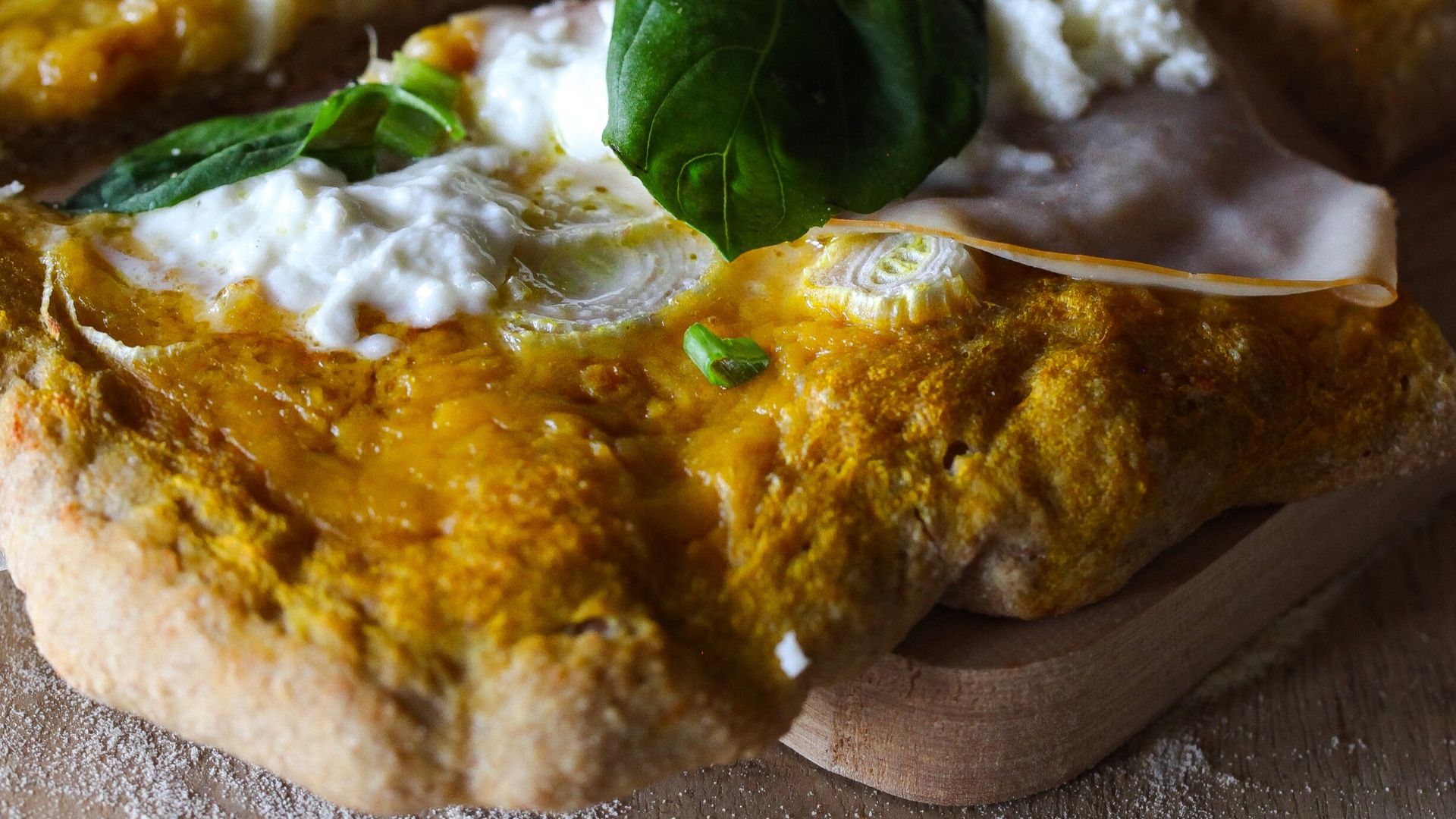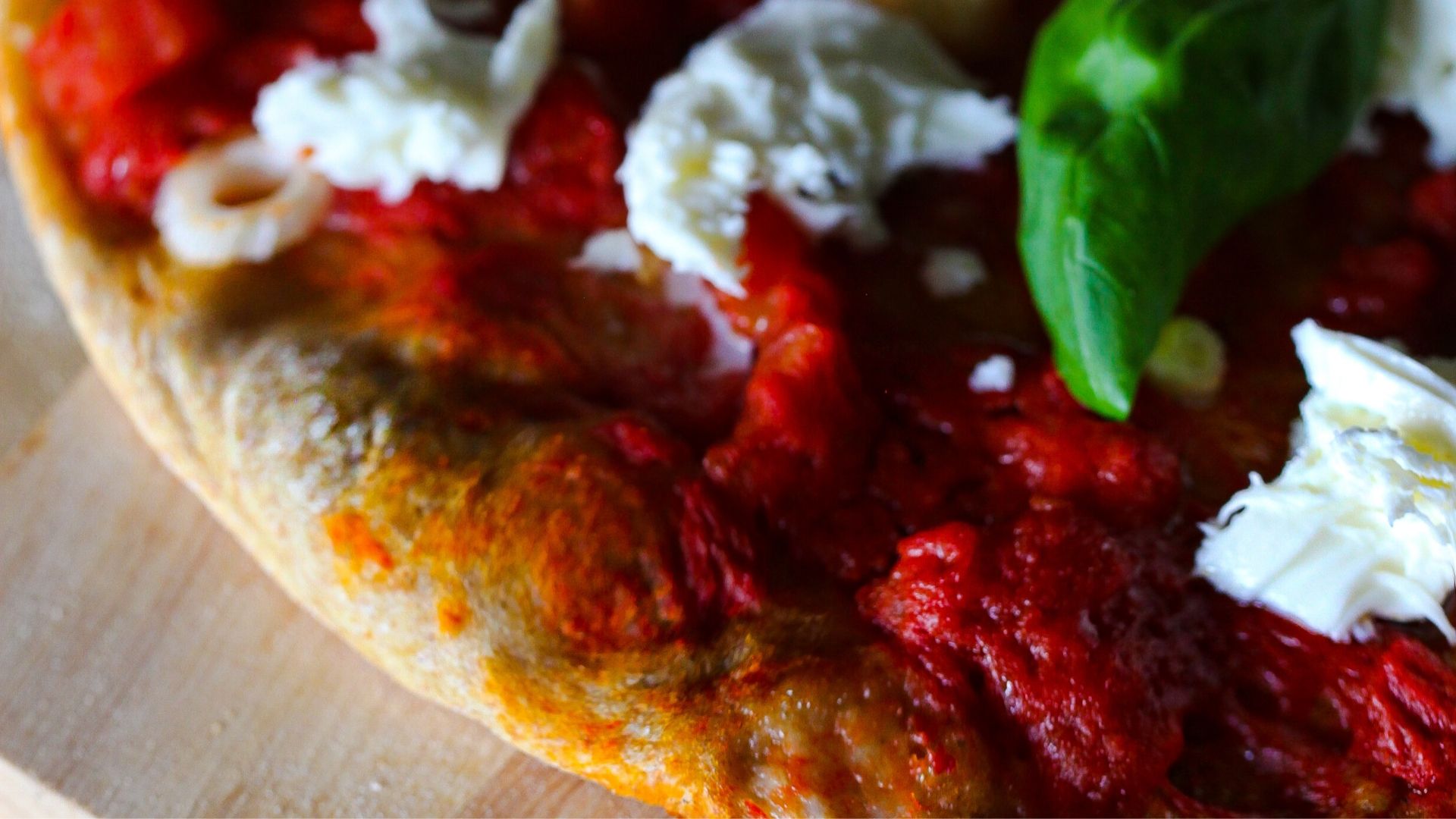January 17 is the World Pizza Day (and pizza maker's day) thanks to the Associazione Verace Pizza Napoletana which, in 2019, celebrated the 35th anniversary of its foundation. This date was chosen because January 17 is the day consecrated to Sant'Antonio Abate, bakers and pizza makers protector. Some time ago bakers and pizza makers families celebrated their saint by leaving their premises closed, gathering in a square and accessing a huge fire of thanks.
We too are very keen to celebrate and celebrate pizza ... with pizza!
Good and healthy pizza: is it possible?
Can pizza be a complete and balanced dish? Of course yes! This Neapolitan specialty can easily bring all the nutrients in the right proportions and be a balanced dish even if dense in calories. However, some tricks and stratagems are necessary.
The recipe proposed below is a perfect combination of balance and taste. We will make a healthy and balanced homemade pizza starting from a high-quality dough, which will be fragrant and highly digestible.
The wholemeal dough is made with spelled and type 1 flours, it is very hydrated because it contains over 80% of water and has a 24-hour leavening. This video will guide you step-by-step, showing all the various steps for making the dough, then moving on to the preparation and finally cooking pizza!
Does pizza make you fat?

Pizza with pumpkin and turkey breast. Credits: Giorgia Baglio - lefitbistrot.it
In general, a medium-sized pizza brings about 1200/1250 kcal, but keep in mind that the amount of calories is extremely variable! I don't advise you to rely on generic nutritional values tables, because there is not a single way of making pizza.
In the classic dough, you will find water, flour, yeast, and salt, but there is no shortage of pizza chefs who also add lard to make the dough softer. The "Roman" pizza dough has a variable percentage of oil inside. Not to mention the seasoning, which in most cases is totally unquantifiable in terms of calories! There are pizzas that even have 15-20g of oil on the surface.
Anyway, the percentages of macro-nutrients in a margherita pizza with classic dough (made with 0 or 00 flour, therefore refined white flours) are:
- 40-45% carbohydrates,
- 20-25% protein,
- 35-40% lipids.
In principle, these percentages are not that bad. Let's see how to improve them, especially from the nutritional content point of view!
Flour
The first thing to do to make the pizza healthier is to replace the refined flour with a good wholemeal flour, complete with germ and bran that provides more protein, more fiber, more essential fatty acids, more vitamins and minerals (which are normally lost in the refining process).
In addition, all the riches of wholemeal flour reduce the glycemic index of the food. Always choose excellent quality flours, both for health reasons and for the recipe you are going to prepare; or select pizzerias that boast excellent raw materials.
Condiments

Pizza margherita with Tropea onions. Credits: Giorgia Baglio - lefitbistrot.it
Choose to moderate the number of seasonings by preferring quality. For example, a little mozzarella but from selected producers, true Parmesan instead of cream-based creams and other cheeses. Add more vegetables (pumpkin, mushrooms, courgettes, peppers, aubergines, etc.), to increase not only the fiber but also to lower the glycemic index with greater satiating power!
These simple moves improve the distribution of macro-nutrients, balancing the share of carbohydrates and fats more effectively.
Obviously, the more a pizza is seasoned, the more unbalanced it is, given that the seasoning determines most of the differences in caloric intake. Plenty of oil, cheeses, dried fruit creams, salami, fried foods ... it's easy to go overboard, and even a lot, when you overdo it with fats!
Dough rising
A very important aspect concerns the rising of the dough, which must be slow!
During the slow leavening process, in fact, the fermentation of lactic bacteria together with that of yeasts leads to the activation of the enzymes amylase and proteases which make the proteins more digestible and less sensitizing for gluten intolerance, lower the glycemic index, slowing down the absorption of sugars and, furthermore, greatly improving the taste and aroma of pizza.
Cooking
Cooking takes place at high temperatures, in the home oven between 200° and 230 °. Make sure it is cooked but not scorched!
Avoid greasing the oven pan with a lot of oil: buy non-stick trays wet a little kitchen paper with 2-3 gr of oil and then sprinkle it on the surface of the pan. Alternatively, you can line the trays with parchment paper. So that the base of the pizza does not stick to the paper, sprinkle a little flour before laying the dough.
Red pizza and white pizza
There is another note to make! A seemingly simpler pizza like white pizza or the ones with a red base like the marinara certainly have fewer calories than more seasoned sisters, but are also blunt in favor of carbohydrates, so they are not a complete meal!
This type of pizza raises the glycemic index a lot (even more if the dough is with refined flour) and is decidedly not very satisfying.
Gluten-free pizza
Gluten-free pizza is NO MORE HEALTHY.
A pizza made with bad raw materials, a hasty leavening, exaggerated use of salt and ingredients rich in saturated fats, does not magically become healthy because it does not contain gluten! The absence of gluten makes it suitable for all those suffering from celiac disease, but it is important to keep in mind all the indications provided above, with the only difference represented by the choice of gluten-free flours for the realization of the dough.
After this overview of pizza, let's move on to the recipe of the dough!
As you will see from the ingredients, on 1kg of flour, 50% is made up of wholemeal spelled flour.
Spelled has similar characteristics to wheat but unlike the latter it is resistant to bad climatic conditions and diseases, so much so that its cultivation does not require pesticides.
DOUGH
INGREDIENTS
- 500g spelled flour (find it here)
- 400g type 1 or type 2 flour for a more whole dough (type 2 flour here)
- 100g durum wheat semolina (try organic semolina)
- 7g brewer's yeast powder (here it is) or 150g of sourdough
- 15g of salt (try a different salt than usual)
- 800-850 ml of water
- 40g extra virgin olive oil (taste the organic oil)
MACROS 1/8 OF DOUGH: C 79.1g F 5.9g P 16.5g
KCAL: 459
METHOD
- First of all, add all the flours and mix them together.
- Add the water gradually, on the edge and mix with a spoon clockwise and towards the center (about 600g).
- Add the brewer's yeast in the center and then the oil and a little more water, and mix. In this phase, the dough must be "torn" (as the teacher Gabriele Bonci teaches)
- Salt in the center, be careful not to rub salt and dough with the bowl.
- Continue to mix until it forms a nice compact dough, incorporating all the flour from the bowl.
- Put it on a work surface and do the regenerations. In total the regenerations must be 5. One every 10 minutes. Carrying the upper flap of the dough towards the center, then the lower flap towards the top in closing. Turn the dough so that the fold of the dough ALWAYS returns vertically to you.
- Once the regenerations are finished, cover and put in the lower part of the fridge for 24h.
- Remove the dough from the fridge and let it rest as it is at room temperature for 1h.
- Put it on a work surface dusted with flour. Do not roll out with a rolling pin. Pinch the edges with your fingers, roll out with your fingertips bringing the dough outwards.
- Grease the baking tray with a thin layer of oil. Lay the dough distributing it over the entire surface of the tray.
- Preheat the oven to 230 °.
- Season the pizza.
- The duration of cooking is conditioned by the seasoning and your oven. First, place the pan on the bottom of the oven for about 10 minutes, then move it to the center.
- The mozzarella should only be combined after cooking, if you want to melt it well you can keep it for a few minutes in the upper part.
PIZZA MARGHERITA WITH RED TROPEA ONIONS
- 1/8 of the dough
- 200g tomato puree (try the organic puree)
- 1 Tropea red onion
- 100g mozzarella
- 10g Parmesan cheese
- 5g Evo oil
MACROS: C 88g F 32.9g P 45.8g
KCAL: 862
PIZZA WITH PUMPKIN AND TURKEY BREAST
- 1/8 of the dough
- 300g of pumpkin cooked in the oven or in the microwave
- 50g breast of turkey breast
- 20g Parmesan cheese
- 5g Evo oil
MACROS: C 90g F 15.8g P 39g
KCAL: 478
Conclusions
These are just two of the infinite combinations of ingredients that will make the pizza perfect for your tastes! So indulge yourself and let us know how much you liked this recipe by tagging on Instagram @iafstore and @lefitbistrot!
